Architecture, Gardening & Community – GGLO designs and builds vegetable stand in Zimbabwe
March 21, 2022
March 21, 2022
At GGLO, we strive to make positive impacts through our design of the built environment. We understand that our work can be a catalyst for belonging and well-being in neighborhoods geographically near and far. It is natural for us to support initiatives that seek to improve the livability of our communities.
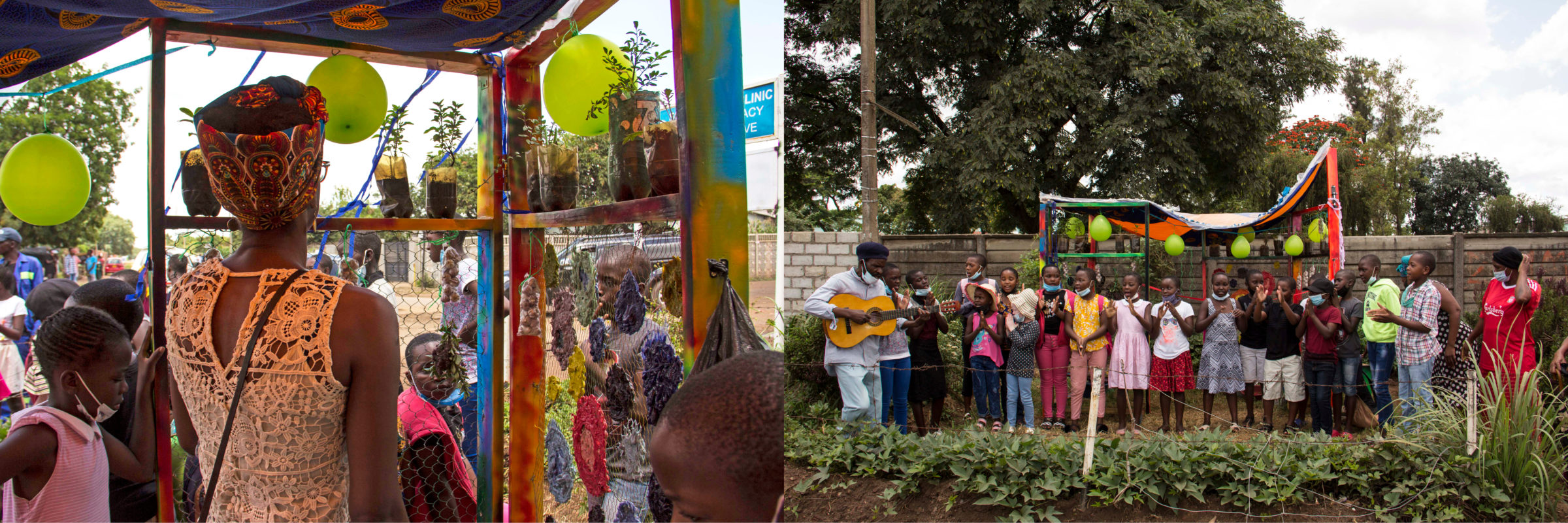
Photos by Tichakunda Mafundikwa
In 2018, members of GGLO’s Emerging Professionals Group assembled a proposal for a workshop and design-build project in Zimbabwe that was inspired by the group’s modular entry for the Seattle Design Festival. The goal was to create vendor stalls for the informal markets in Harare. At the beginning of 2020, the team was ready to fly to Zimbabwe to work on the project, but the COVID-19 pandemic put it on hold.
At the end of 2020, Simba Mafundikwa, who is of Zimbabwean heritage, traveled to Mbare and met with local architects, designers, artists, and community leaders at the Mbare Art Space. Mbare is a high-density and low-income suburb in Harare, Zimbabwe and is well-known for reusing, repurposing, and recycling materials. Magaba, the area’s biggest informal industrial repurposing market, receives various industrial and commercial debris and turns them into usable everyday objects. Mbare is also home to Mbare Musika, the largest farm produce and artisan market in the country. “Various city-owned structures in Mbare are suffering from urban decay, so the Mbare Art Space was created as a tool for urban renewal and regeneration,” said Moffat Takadiwa, leader and artist at the Mbare Art Space.
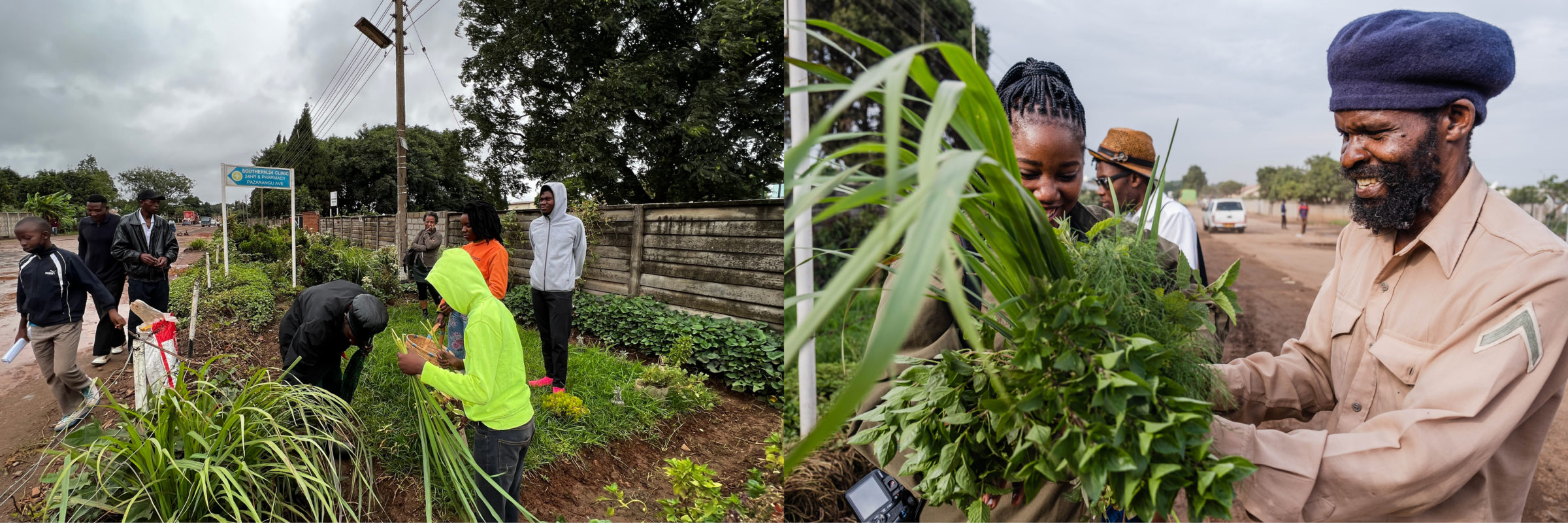
Photos by Simba Mafundikwa
During the pandemic, Mbare residents worked to create more spaces for produce to be grown. This initiative was led by Kura, an organization in Mbare that works to train, educate, and empower children through art, music, and permaculture. Uncle Bravo, the community organizer and leader of Kura said, “the community gardens became an opportunity to expand the children’s knowledge about permaculture, give them experience in growing and cooking with their own produce, and to share produce with nearby vulnerable populations such as elderly people and those living with disabilities.”
In Simba’s meeting with Uncle Bravo, Moffat, and Harare-based architect Nora Müller, they expressed the need and desire for a community garden vegetable stand that could be:
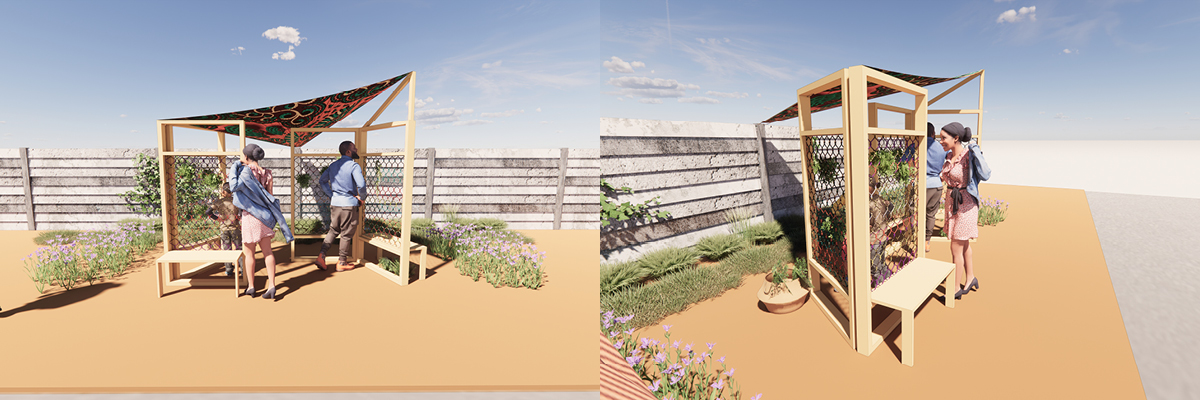
Renderings by Simba Mafundikwa
Simba initially proposed a conventional design that was similar to GGLO’s 2018 Seattle Design Festival submission that included a counter to display the produce. The design began to evolve and eliminate the idea of a line between the seller and the buyer. After several sketches and mock-ups, they landed on a Z-shaped design without a counter that was more interactive, allowed people to walk through and around the stand, and creatively display the vegetables and herbs vertically on the panels.
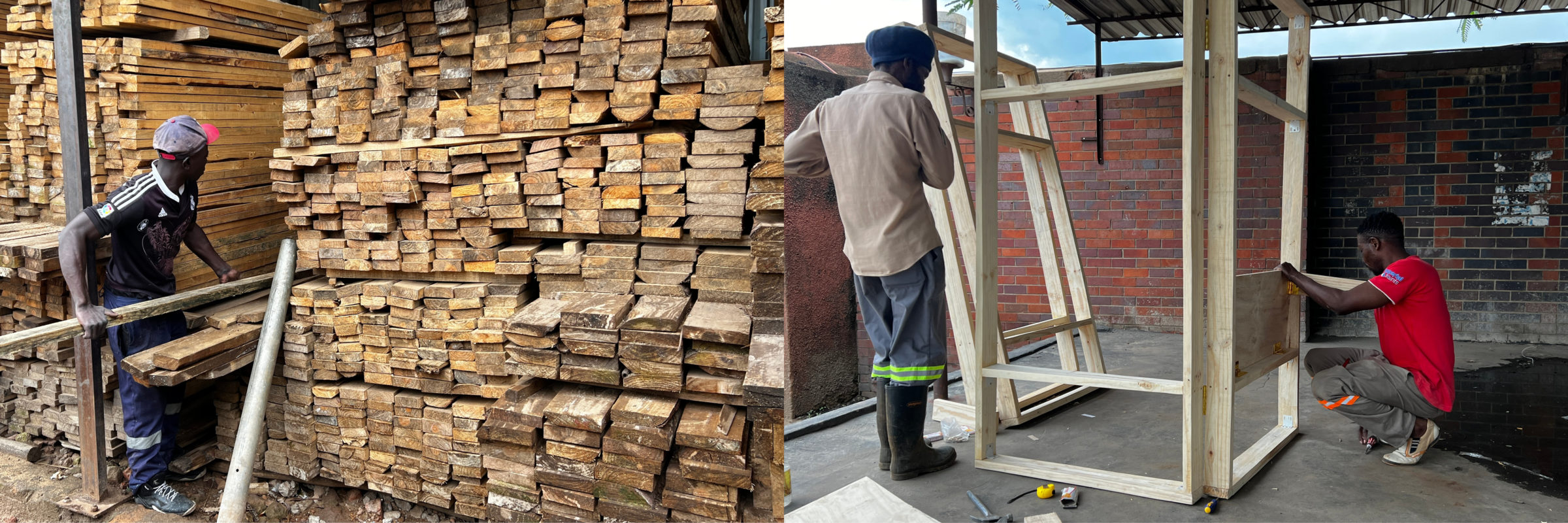
Photos by Simba Mafundikwa
The panels with built-in seating were constructed by local carpenters and builders in the Mbare Art Space and utilized materials and tools from Magaba. Mesh was added to showcase the produce. Other materials such as reused plastic, chicken wire, and woven grass were considered as well, but the team decided on metal mesh with melted plastic because of its durability, longevity, and ability to create shapes in an artistic way. After the panels were joined together, local artist Julio Rizhi worked on painting the panels and creating the mesh. Another artist in the Mbare Art Space, Kundai Nathan, collaborated with local seamstress Patricia Murembeni on the design of the removable roof, which included a fabric layer and plastic layer. The roof connects the panels to the existing wall behind the stand.
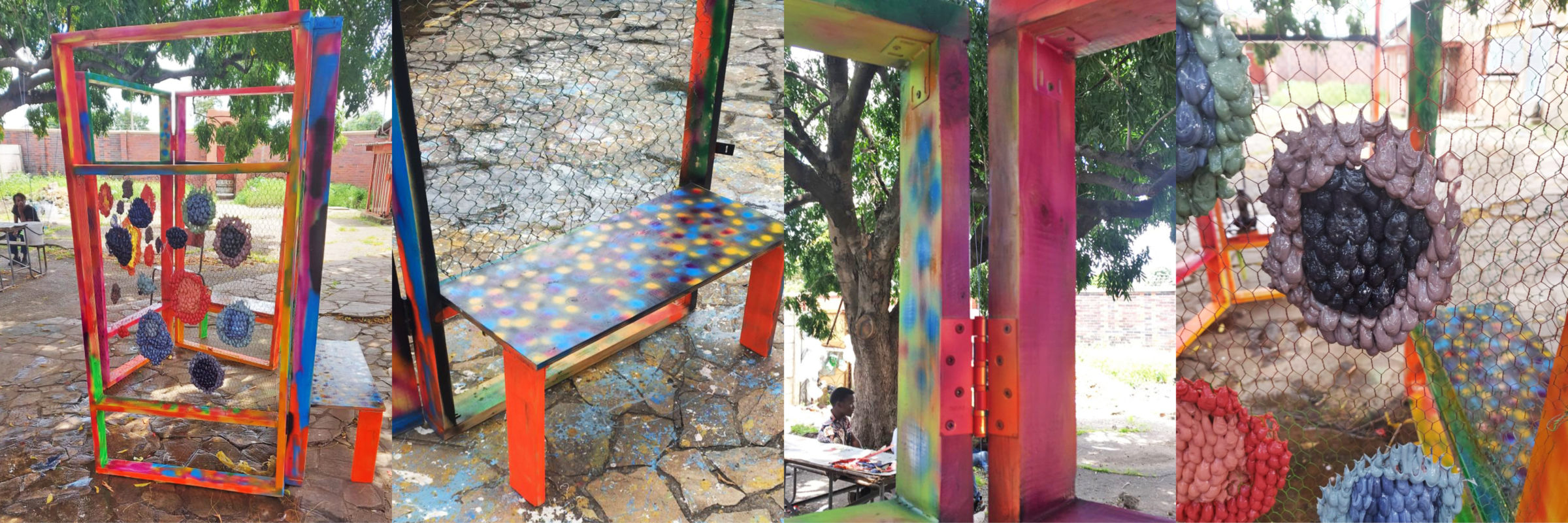
Photos by Nora Müller
Since the veggie stand was implemented in February 2022, it has positively impacted the community at large. “People gathered at the stand to share and gain knowledge about the herbs and vegetables. The bold colors and design of the stand pulled people in and made them curious after seeing a familiar typology, the market stand, implemented in a new and surprising way,” expressed Nora. The veggie stand became an opportunity for local primary school students to practice their permaculture education and introduce the community to a wider variety of vegetables and herbs.
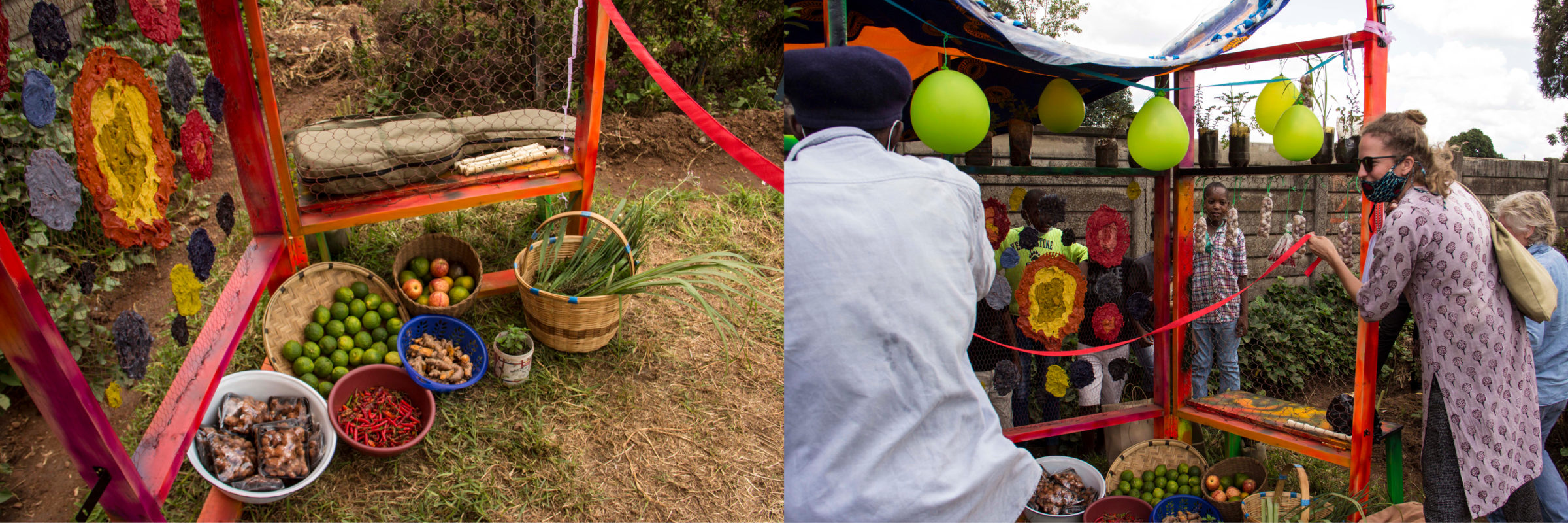
Photos by Tichakunda Mafundikwa
This project shows how we, as designers, can have an impactful role in shaping our built environment in communities locally, nationally, and internationally. Special thanks to: Simba Mafundikwa, Kayla Verbitsky, Greg Stacy, Uncle Bravo, Nora Elizabeth Müller, Moffat Takadiwa, Austin Zuze, Swarts, Patricia Murembeni, Julio Rizhi & Kundai Nathan, and Afrikera Arts Trust.